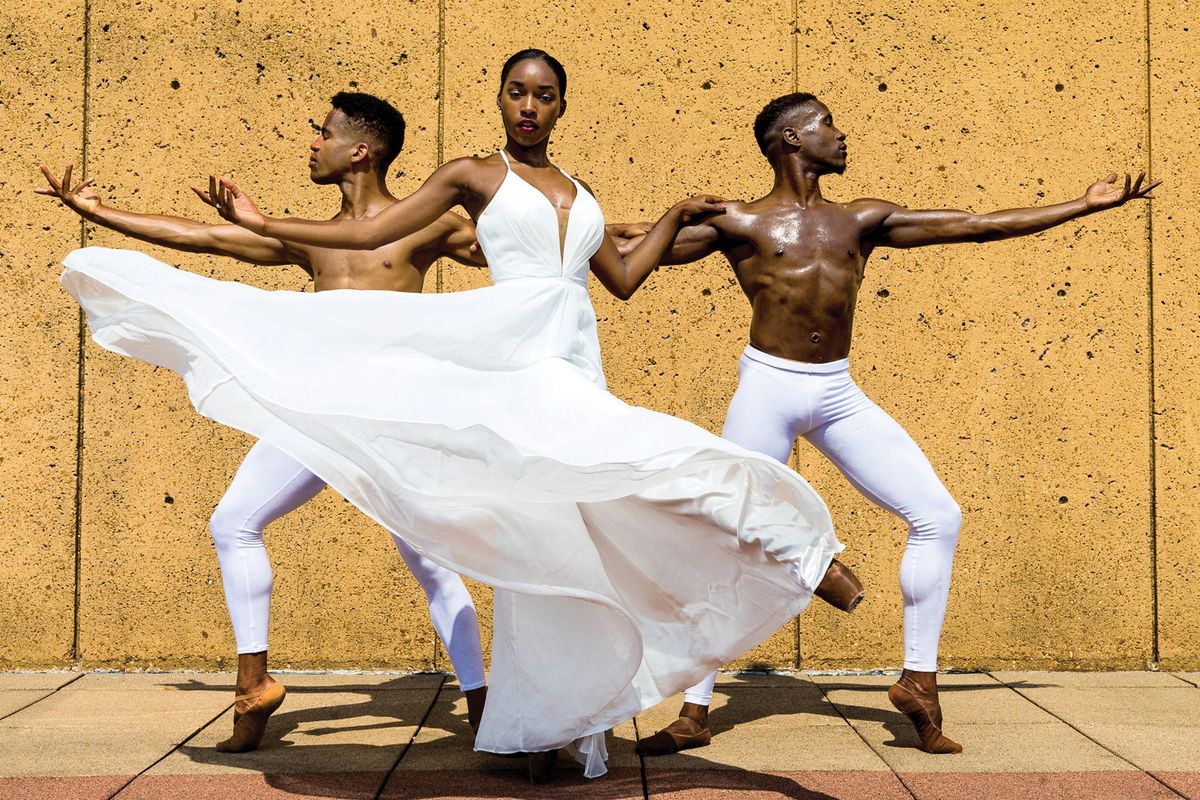Collage Dance Collective Presents Diverse Works for New Audiences in Memphis
With scores from Tchaikovsky to Aretha Franklin and dancers from French Guiana to Brazil, Collage Dance Collective is as rich in variety and culture as its local community. Establishing roots in Memphis, Tennessee, known for its blues and civil rights history, was an intentional move, says artistic director and co-founder Kevin Thomas. He moved the company there from New York City in 2007, just one year after its inception. “We felt like it was the perfect place to grow.”
Company History
Before he became a director, Thomas had an impressive career performing with Les Grands Ballets Canadiens, San Jose Cleveland Ballet and Dance Theatre of Harlem, as well as making guest appearances with The Royal Ballet, Complexions Contemporary Ballet and The Phantom of the Opera on Broadway. He formed Collage in 2006, with executive director Marcellus Harper, after he self-produced a series of works while on hiatus with DTH. With a grant and a successful debut under their belts, Thomas and the company set out for Memphis to fulfill its mission.
Collage’s goal is to present more dancers of color on professional ballet stages and to grow audiences that include more people of color. “Everything I do is because of that,” notes Thomas, recalling how seeing dancers who looked like him, like Lauren Anderson and Ronald Perry, inspired his own career and the company’s mission. “You need to see yourself,” he says.
Training and Outreach
In 2009, Collage continued its efforts to grow a diverse ballet culture in Memphis by launching the Collage Conservatory, which now has more than 240 students and 250-plus participants in its outreach programs. “It’s important for us to be in as many communities as possible where this kind of training is not accessible,” says Thomas. For those in its outreach programs, Thomas proudly shares that Collage is often their first experience with ballet. Full conservatory scholarships are offered to the most promising community students.

Thomas Barwick, Courtesy Collage Dance Collective
Repertoire
Many of Collage’s first-time attendees connect with the stories portrayed onstage, the music or the dancers. “It’s an interesting journey we’re taking the audience on,” says Thomas, speaking of the classical and contemporary ballet, narratives and new creations that make up its rep. “We’re presenting ballets they can relate to.”
Since 2018, Collage has had 7 commissions and 10 premieres. In its 2018–19 season, works ranged from Sir Frederick Ashton’s Meditation from Thaïs to Camille A. Brown’s New Second Line. Last season featured Swan Lake‘s Act II alongside Darrell Grand Moultrie’s commissioned Frankly Speaking and Thomas’ Rise, set to Martin Luther King Jr.’s last speech in Memphis, with an original score by local musicians. “That’s why I appreciate Collage,” says company dancer Kimberley Ho-Tsaï. “It’s very diverse and so challenging. I don’t have time to get bored.”
Studio Life
“It’s amazing to see the impact Collage has on the community,” says Ho-Tsaï, who graduated from Dance Theatre of Harlem’s professional training program and performed one season with Complexions before moving to Memphis in 2015. A number of the company members teach at the conservatory and also represent Collage in partner-studio classes throughout the city. They’re paid to teach in addition to their salary and the health benefits they receive as part of their company contracts.
Collage follows a typical Monday-to-Friday workweek. The day begins with a mandatory 90-minute ballet class, taught by Thomas or conservatory instructors, followed by rehearsals for the remainder of the day. Outside of performances, the company only works on nights or weekends when it needs to accommodate visiting choreographers. “Usually after a choreographer leaves,” Ho-Tsaï says, “we’re exhausted, but the process of creating is amazing.”
Originally from French Guiana, Ho-Tsaï is one of five international dancers in the eight-member troupe. “Even though they’re a small company, they really open their doors to international dancers,” she says, recounting the support she and her colleagues have received with their work visas. Born in Trinidad, raised in Montreal, and having built a thriving U.S. dance career himself, Thomas is able to draw on his experiences to help his dancers.
More than the support she’s received, Ho-Tsaï says she returns to Collage year after year because she believes in its mission to expose minority communities to classical art forms. “I want to do the same type of work in my home country,” she shares. “Here, I have a purpose. I dance for something.”

Andrew J. Breig, Courtesy Collage Dance Collective
Audition Advice
Collage Dance Collective holds auditions from January to March in Houston, New York City and Chicago. Artistic director Kevin Thomas looks for versatile, dedicated artists who can adapt and apply corrections. “That’s the difficult thing about finding dancers,” he says. “They have to be able to do everything well.” Company member Kimberley Ho-Tsaï recommends that dancers have very strong classical technique, as well as other styles in their back pocket. “I can start on pointe, move to socks and end barefoot all in the same show,” she says.
Making Moves
Collage is at the tail end of an $11 million fundraising campaign, which will help the company build a new facility and expand programming for its increasingly diverse population of students and supporters. In addition to five studios, the new building will include parent and dancer lounges, a costume room, an office suite, a self-serve store for merchandise and healthy snacks, and an outdoor performance space. Collage hopes to move in by the end of 2020.
Collage Dance Collective At a Glance
Number of dancers:
8, with plans to increase to 12 for the 2020–21 season
Length of contract:
32 weeks
Performances per season:
Fall, winter and spring seasons, plus several community and touring performances
Website:
collagedance.org





